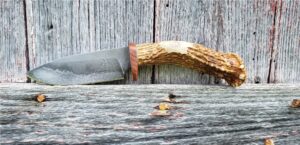
By John Markwell |Contributing Editor
North Mountain Knives
We have known Tyler Wilkins for quite a while. We mentored him through his early years of pistol shooting. Then he went away to college, got married, and re-appeared several years later on our radar helping to run the local IDPA club. He also started making hand-made knives; which are one of our many weaknesses.
Having seen some of Tyler’s work a while back, we mentioned the possibility of doing a write-up on his budding enterprise, North Mountain Knives. Tyler sent us some photos and info and asked what we would prefer in the way of handle material for a knife. At the September IDPA match in Davis, WV Tyler surprised us with a small fixed blade knife. Designed to be used as an EDC (everyday carry) knife, this model has no name, as of yet.
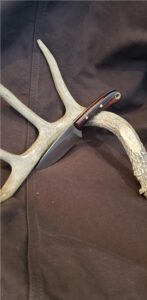
We have noticed with interest over the years that in the East few folks carry fixed blade knives on a daily basis. Some of this is due to local restrictions, we are sure, and some of it is based on regional custom. In the West (especially in the plains states) it is quite common, at least for rural folks, to carry a small fixed blade as their everyday using knife. We have been tradition bound and have carried folders on a daily basis for most of our life; some just plain old pocket knives and others sheathed folding knives carried on the belt. Even though we have a passel of small fixed blades they have always been relegated to use in the hunting fields or outdoors. This new acquisition from North Mountain Knives is changing our outlook on a fixed blade for daily carry, especially now that we are entering “wool vest season”; plus, it’s to neat a knife not to be used.
Tyler used 1085 high carbon steel for our EDC knife, although he said is switching to 52100 soon. Blades are cut to shape on a band saw and then ground on a 2”x72” belt grinder. After final grinding and drilling the blade is heat treated in Tyler’s shop in a Paragon oven giving the blade a hardness of approximately 60 Rc. The 2.8-inch blade of our EDC knife is flat ground with a square spine and a slight drop point. There is a nicely executed choil in front of the quillon. There is a subtle blade flat above the grind line that extends almost half the length of the blade which is a good look as well as adding strength to the blade. The cutting edge of the blade measures 2 11/16 inches. To help mitigate rust, the blade is coated in Ferric Chloride which oxidizes the surface and gives the steel a nice gray hue. The OD green Micarta handle scales cover the full-length full thickness (.132 inch) tang and are attached with one good sized brass rivet and a large lanyard hole ferrule made from a section of 5.56 brass rifle case. The Micarta scales are nicely shaped with no sharp edges and are polished with 220, 400, and 600 grit in succession. Final weight of the knife and its’ sheath is a mere 3 ¾ ounces, including the leather thong and deer horn accent attached to the lanyard hole. The weight of this little gem could be further reduced if it had a tapered tang which is a treatment that we are very fond of.
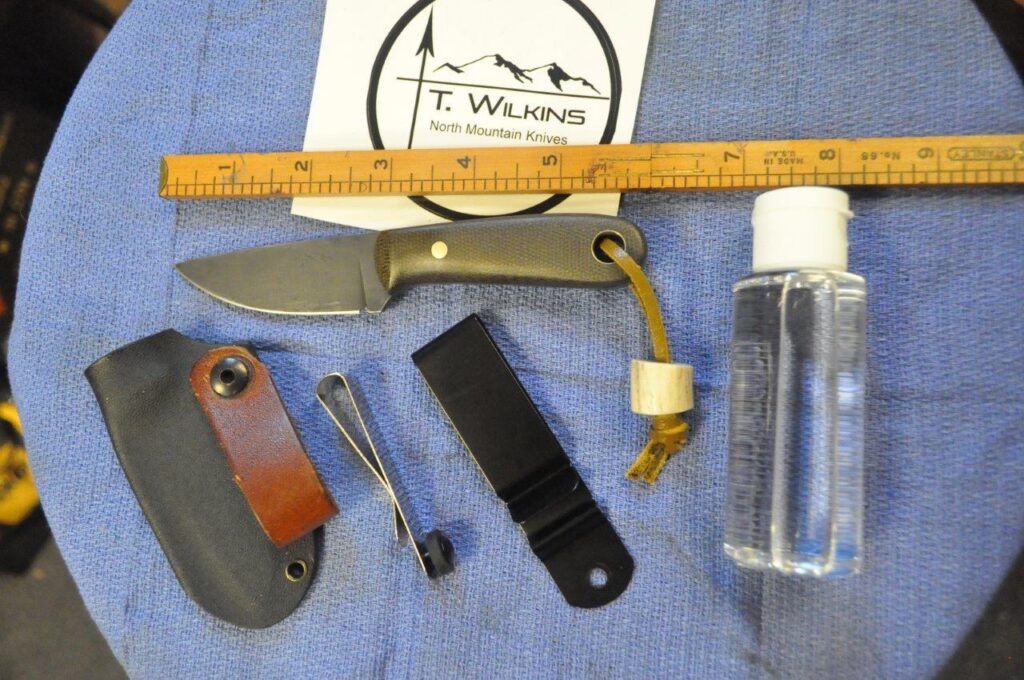
Accompanying the EDC blade is a nicely molded and compact Kydex sheath with both metal belt and pocket attachment clips. We tried both belt and pocket carry using the supplied clips and found neither were quite right for our needs and comfort. We ended up attaching a leather belt loop from an old IWB holster to the sheath with a Chicago screw and this seems to be working out just fine. Although we would have preferred a snap-on belt attachment it didn’t come to pass due to the lack of a proper piece of hardware (a longer rivet), so we will tolerate threading the outfit on to our belt. The whole unit, knife and sheath, carry perfectly, somewhat unobtrusively and with comfort under the belt just to the rear of a single mag pouch behind the left hip.
Using and carrying this little EDC knife has been great fun both for everyday chores and in the kitchen. The edge holding capability of the 1084 carbon steel is very good and the size and shape of the blade with its’ Micarta handle makes for a very capable tool. Whether gutting green peppers, trimming a brisket, cutting baler twine or cleaning one’s finger nails, this compact EDC fixed blade from Tyler Wilkin’s North Mountain Knives is 5 7/8 Inches of compact workhorse. Priced at $100 (or in our case bartered for 100 rounds of 9mm Federal Hydra-Shok), this little blade is attractive and functional and easily worth every penny. To see more of Tyler’s knives go to: www.northmountainknives.com
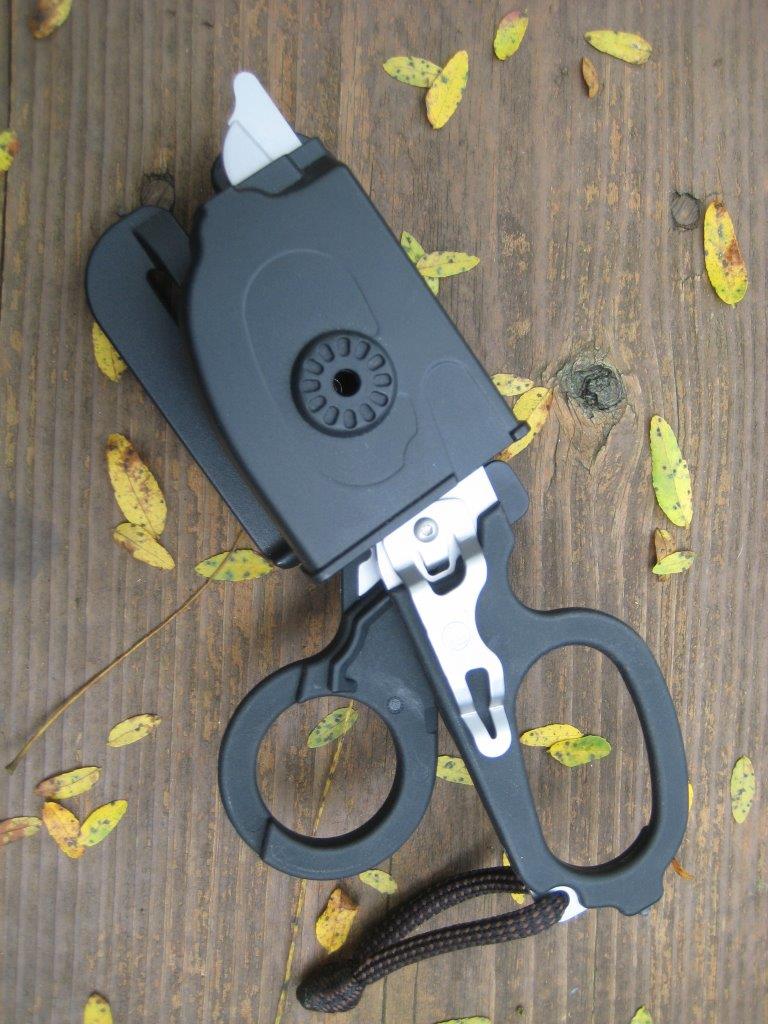
The Leatherman Raptor
Running an outdoor business at a major rock-climbing area and working Ski Patrol during a dozen or so winters got us involved in the rescue/ First Aid world.
This was more by circumstance than by choice but it led to some interesting times to say the least. We wish the new Leatherman Raptor had been available when we were doing rock rescues and spending time plucking folks the ski slopes.
The Raptor is a tool designed for emergency use by rescue professionals. The Raptor is essentially a heavy-duty pair of scissors; trauma shears as they are called in the industry. Designed to cut most anything that needs to be removed from a patient to treat an injury, this type of tool is commonly carried by rescue/medical personnel. However, the quality of these useful tools varies from impeccable and expensive to shoddy and cheap. Also, most shears of this type serve a single purpose; not the Raptor.
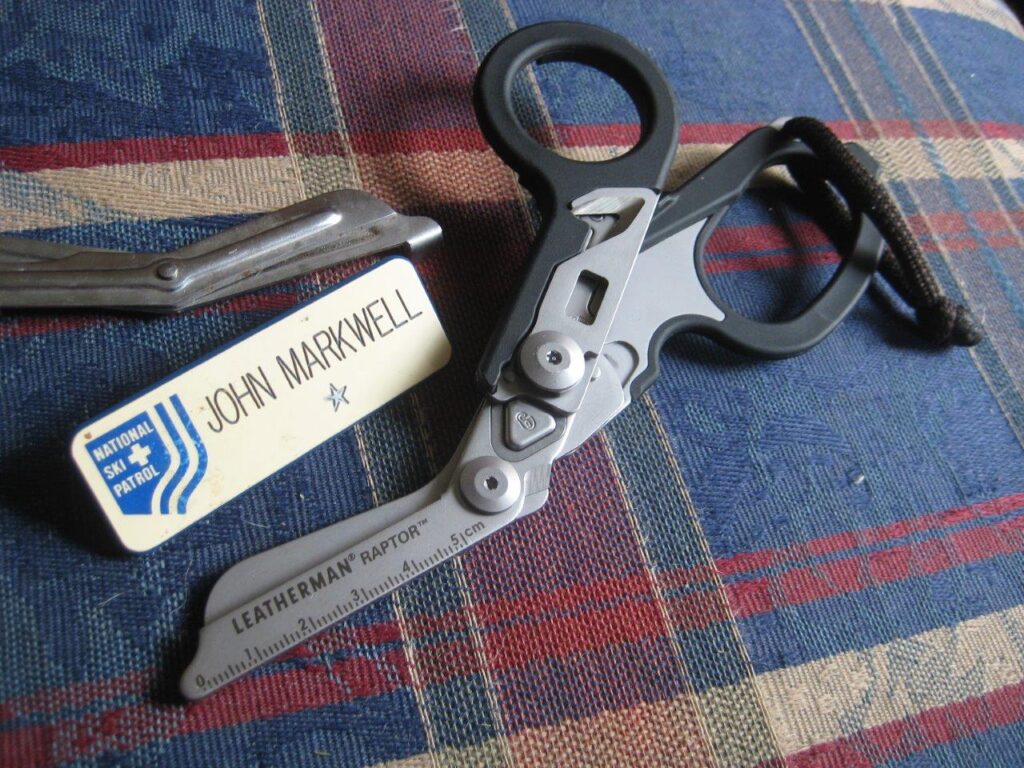
The Raptor is first and foremost a super pair of shears with stout serrated blades. It is also a toolbox of those items often needed by emergency personnel. In one convenient package the Raptor also has a strap cutter, a ring cutter, a ruler, an oxygen tank wrench (which seem to always disappear in the snow) and a carbide glass breaker. There is also a clip for pocket carry and a lanyard attachment point. Probably the most valuable tools for the non-professional user of the Raptor (besides the shears) are the strap cutter and glass breaker. Should one come upon a serious vehicle accident either could be invaluable. The ring cutter can also be used to cut wire if need be.
This is a great tool to have in your car, backpack, RV, ATV, or, obviously, your first aid kit. Measuring 5” folded up for convenient carry and a bit over 8” when deployed, the Raptor weighs a hefty 5.8 oz. and disassembles for cleaning if necessary. Although it comes with a MOLLE compatible plastic sheath we instead tied a lanyard thru the provided hole and planned on using the pocket clip for carry.
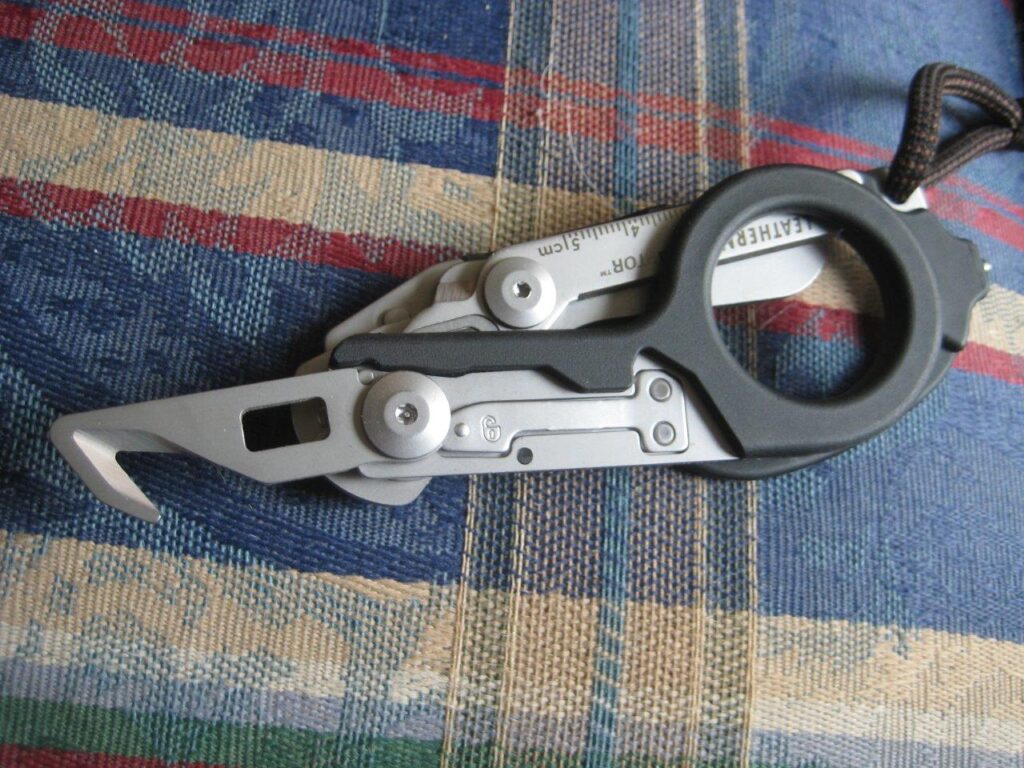
We took the Raptor on the road with us for the month-long Spring 2020 prairie dog/gopher shooting trip to the great plains. Fortunately, the closest thing to an emergency we encountered was fitting a replacement polymer screen door slide to our truck camper’s screen door. The Raptor made quick work of trimming the heavy polymer down to size. We wondered how the shears would hold up to the heavy cutting but the Raptor, even with considerable force applied, cut the thick plastic easily and the blades did not bend or spring out to the sides, which we feared they might do. This is one stout tool!
We feel the Raptor will set a new standard for the shears used in the world of emergency care. Tough, versatile and multi-purpose, the Raptor will be a valuable addition to any first responder’s or outdoorsman’s kit. The Raptor would also make for a dynamite gift for any person working in the world of emergency care. We know we would have loved to have had a Raptor on many occasions rather than the cheesy shears we had over the years. MSRP on the Raptor is $70.00 and it’s worth every penny.



